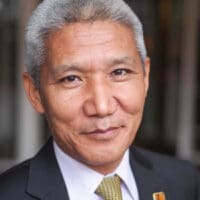Overview
Systematic theory of perception first emerged in Buddhist thought in the writings of Dignāga (circa fifth century). He defined perception-arising from the convergence of object, sense faculty, and awareness-in terms of absence of conceptuality, the latter involving “associating names and kinds to the object.” Dharmakīrti (seventh century) developed this view further and defined perception as “cognition free of conceptuality and undistorted.” For both these thinkers, perception relates to unique particulars that constitute the real world while conceptual cognition relates to general characteristics that are constructs of our own thought. Subsequent developments, especially by Dharmottara (eighth century), ushered in a more “active” view where perception acquires a more “ascertaining” character and is seen as intimately connected to the arising of correct perceptual judgment and action readiness.
These Buddhist epistemologists view perception as apprehending its object by assuming an “aspect” or phenomenal form imprinted upon the cognition through the contact of the object with the sense faculty. Although veridical sensory experience, especially visual awareness, is taken to be paradigmatic, perception is not confined to the sensory modalities alone. It includes mental perception as well.
This presentation will situate Buddhist epistemology in its historical context, and focus on two points: 1) how perception is defined, and 2) how the insistence on perception being free of conceptuality raises important tensions within Buddhist epistemology, especially for the key question of how our perception and thought interact in creating an integrated cognitive experience of the world.
- Dialogue 3019 sessions
- December 14, 2015Sera Monastery, Bylakuppe, India


